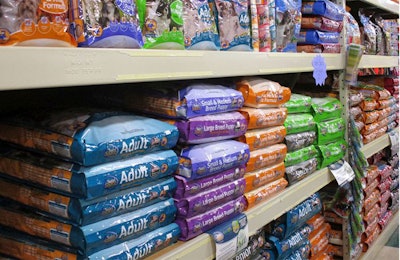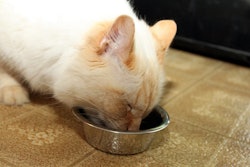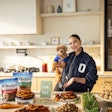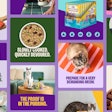
Adapted from a press release:
Just Right, a personalized dog food brand, commissioned the Nutritional Knowledge for Dogs survey to learn more about the shopping habits of the pet food customers and their knowledge of the nutritional needs of their dog. What was found is that dog owners are typically uncertain that they are feeding their dog correctly, and that their interest in “personalization,” varies by age group.
The survey reached 800 dog owners and revealed that amongst the entire group, only 2 out of 5 felt confident that they are feeding their dog the right nutrition when they are purchasing dog food. While a bag of dog food might seem correct for your dog based on size and age, there are several other health factors to consider as well.
What affects younger pet owners’ pet food, care decisions?
From previous reporting: U.S. millennial and gen Z pet owners spend the most monthly on their pets, according to several surveys and sources. What they buy, how they shop, and who and what influences their purchasing decisions will likely affect the pet food and pet care markets for at least the near future.
Without reaching any definitive conclusions, we both postulated that, with millennials and Gen Z-ers being digital natives, purchasing behaviors like using online subscriptions made a lot of sense. Another theory we discussed, specific to the lower spending on veterinary care, is that younger consumers are more independent, even do-it-yourselfers, and less reliant on traditional “authority figures” and similar experts.
Further, the report compared an “old paradigm” to a new one in terms of influences on pet owner decision-making. In the old paradigm, consumers trusted not only veterinarians but also major brands backed by vets, as well as large pet specialty retailers. Now, they are just as likely, if not more so, to turn to peers, breeders, e-commerce retailers and all brands – major, “challenger” and direct-to-consumer ones – even if not recommended by vets.
Accurate pet food calorie estimates may fight obesity
From previous reporting: Providing accurate calorie estimates helps pet owners avoid feeding their animals more energy than they need in a day. Improving calculations and subsequently calorie labeling could help fight the growing obesity problem in pets.
The varieties of dog, cat and other pet food available have diversified from conventional kibble to a range of options, including frozen or refrigerated fresh pet foods. This diversification of pet food options may have implications for calculations used to estimate a particular formulation’s energy and nutrient content.
Nutritional Knowledge for Dogs survey findings
Among other kind findings from the Nutritional Knowledge for Dogs survey include the most important factors for dog owners when selecting their pet's food.
- 66% of surveyed dog owners say quality of ingredients is extremely important when selecting dog food.
- 90% of surveyed dog owners say their dog's preference is the most important factor when buying food.
- Millennials (25-34) are most drawn to a convenience factor and are more likely to order their dog food online than any other age group.
Other findings in the survey shed light on the younger generation's interest and understanding of personalized nutrition.
- Overall, younger generations (18-24 years old) are 3x more likely to care about personalization than older generations (35-54).
- 54% of Gen Z (18-24 years old) say that personalized dog food means quality ingredients, whereas Millennials (25-34 years old) say it means "better for my dog."
Digitally savvy Gen-Z and Millennial dog owners are no strangers to a personalized approach to wellness. From vitamin regimens to skincare routines, customization is a growing trend in the direct-to-consumer space that has carried over into the way we feed our pets.
From previous reporting on pet obesity
It is not difficult to realize that, in most cases, pet obesity is a result of an excess of caloric intake for the animal’s energy needs. At the same time, it is essential to understand the combination of factors driving growth in the pet food market. From the demand side, these factors are pet population, caloric penetration and overfeeding.
Pet owners are likely feeding their pets according to the pets’ appetites, rather than manufacturers’ guidelines on the pet food packaging labels. This often leads to overfeeding.














